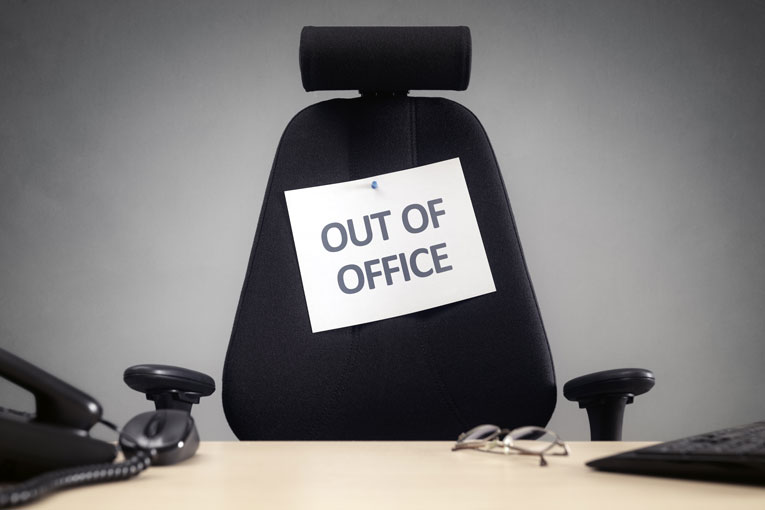As the back-to-work strategy goes into action along with the ease of lockdown, you may be wondering what this means for those on furlough.
Read on for the full and comprehensive guide on everything you need to know about the rules and regulations of The Coronavirus Job Retention Scheme.

What is furlough?
The Coronavirus Job Retention Scheme (CJRS) is more commonly known as furlough. It was launched by the Government to limit the number of redundancies during this pandemic.
It provides all UK employers with financial support to pay a percentage of their employee’s salaries. The current scheme means that HMRC will reimburse 80% of furloughed workers wages, capped at £2,500 per month.
Who is eligible for furlough?
To be eligible for furlough, you will need to meet the following criteria:
- Be a UK employee
- Be enrolled on the PAYE scheme on or before the February 28th 2020
Flexible furlough – what is it?
As the lockdown alleviates, there are also some modifications pending to the furlough scheme. As of July 1st 2020, the main changes are as follows:
- Any furloughed employee can return to work on a part-time basis. This can be for any amount of time and to follow any type of work pattern.
- The employer can claim for hours not worked. It will be assessed in combination with the hours the employee should have normally worked during that period.
- You will need a revamped written furlough agreement in place before the employee embarks on the flexible furlough scheme.
- All employers must keep a record of this agreement and the hours worked by the employee for five years.
- Employees can be put back into furlough from July 1st 2020. This can be for any amount of time and on unlimited occasions.
- If you re-furlough an employee after June 10th 2020, but before July 1st 2020, they will need to be furloughed for a minimum of 3 consecutive weeks.
- Claims for any payments must not overlap calendar months. Separate claims have to be filed for different months.
- While flexible furlough agreements can last any length of time, you should only submit a claim to HMRC once a week.
FOR EMPLOYEES
Do I have to agree before being furloughed?
Yes, you will need to agree to be furloughed and to receive only 80% of your usual salary. The agreement is made via a contract known as a Furlough Leave Agreement.
What is a Furlough Leave Agreement?
A Furlough Leave Agreement is a signed deal that overrides your usual contract of employment. Both the employee and employer will sign the contract confirming their agreed rules of furlough.
The treaty should confirm any salary deficits while on leave. It can also include the circumstances that will end the furlough leave and a lay-off clause for any future reductions in work.
Does my employer have to pay my 20% deficit?
No, your employer can opt to top-up the payment to 100%, but they are not legally required to.
What can I do on furlough leave?
You are not allowed to work or undertake a new paid job. You can, however, complete unpaid training or voluntary work.
Can I be furloughed while I am on long-term sick or self-isolating?
If you are on sick pay or self-isolating, then you cannot be furloughed. You can, however, be furloughed once your self-isolation or sick period ends.
Those on unpaid leave cannot be furloughed unless they were put on leave after February 28th 2020.
I am on maternity leave; can I be furloughed?
No, you cannot be put on furlough while you are on maternity leave. You will be entitled to your usual maternity pay and any associated benefits.
However, there is no ban if you choose to return from maternity leave early to be put on furlough.
What about my holiday entitlements?
You will continue to accrue holiday leave while you are on furlough. You can take annual leave while on furlough; however, your employer will need to ‘top-up’ your wages to 100% pay during that period.
My employer has not offered me a flexible furlough. Is this wrong?
No. Employers do not have to offer flexible furlough to their staff.
Depending on the business, flexible working arrangements may not suit every business need, and its aptness should be reviewed on a case-by-case basis.
Are there restrictions on who can be furloughed?
There are restrictions on who can be furloughed, and the main rules are as follows:
- You cannot furlough an employee for the first time after June 10th 2020.
- You can re-furlough an employee as long as they have been furloughed for three consecutive weeks between March 1st 2020 and June 30th 2020.
I am an apprentice; can I be furloughed?
The furlough scheme does apply to apprentices; however, the Government has stated that training must continue during the furlough.
Employers must continue to pay at least the Apprenticeship Minimum Wage, National Living Wage or National Minimum Wage.
Payment is for all periods of training during furlough leave. Your employer must also consider any changes in rates from April 1st 2020.
I am an agency worker; can I be furloughed?
If you are paid via PAYE, then yes. Just like all employees, as an agency worker, you cannot carry out paid work while on furlough. You must speak to your agency and make a concrete agreement about how your furlough will work.
I have been suspended; can I be furloughed?
If you have been suspended, you can be put on furlough, subject to all other eligibility constraints. We recommend that you speak to an employment law specialist for further advice on your rights.
Can I work for another business while I am furloughed?
If you have a contractual right to do so, then you can work for another business while you are on furlough. However, furloughed employees starting to work for another employer during this time must notify the HMRC.

FOR EMPLOYERS
I am an employer; how do I claim under the furlough scheme?
Claiming is an easy and straightforward process. To claim you will need to confirm:
- PAYE reference number(s)
- The total number of employees being furloughed
- The start and end dates of the claim period
- The amount being claimed
- Your bank account number and sort code
- Your contact details
How do I select who should be furloughed?
There are no set criteria surrounding which employees should be chosen for furloughing.
If an employee was on your payroll on or before February 28th 2020, then they can be eligible.
However, you must be mindful about opening yourself up to discrimination, although it is reasonable for vulnerable employees to take precedence.
Can I reclaim wages if I have asked staff to take a pay cut or work fewer hours?
No. The furlough scheme is only for those employees who are not working.
How long can I furlough my employees for?
The current furlough scheme is a minimum of 3-week cycles for financial assistance to be applicable. However, this will alter effective of July 1st with the optional flexible furlough system.
Can I still make redundancies now that furlough leave is available?
In theory, yes. You will still be expected to pay 80% of your employee’s salaries until you receive reimbursement from the Government. If you are unable to do this, then you may have no option but to consider redundancies.
You can make an employee redundant while they are on furlough or after their return. If you dismiss an employee during their period of furlough, then your grant payments will stop.
What if my employee refuses to be furloughed?
As an employer, you will need to explain your decision. Your need to furlough is down to business necessity and financial survival – thus protecting everyone’s jobs in the long run.
Often, the only other alternative to furlough is redundancy, and most employees would not favour this.
Can an employee who was previously furloughed, be put back on furlough after June 10th?
Yes, they can.
From July 1st 2020, you can only claim for staff who had been previously furloughed for at least three consecutive weeks between March 1st 2020 and June 30th 2020. For the minimum three-week period to have taken place before June 30th, the last time a new entrant could be furloughed was June 10th 2020.
If you are re-furloughing someone after June 10th but before July 1st, you will have to furlough them for a minimum period of three weeks initially.
From July 1st, staff can be re-furloughed for any length of time after this.
Do I need a new agreement if I decide to move my staff onto flexible furlough?
Yes. All employers will need to agree with a new flexible furlough contract with their employees. This will need to be done in writing as per your previous furlough arrangement.
Will it cost me more to furlough staff from August 1st?
The costs to a business for furloughing staff from August 1st 2020 will gradually increase. The total escalations will work as follows:
- From August 1st 2020, employers can no longer reclaim National Insurance and pension contributions
- From September 1st 2020, the government contribution will be 70%, with the employer contributing 10% of an employee’s wages.
- From October 1st 2020, the Government will contribute 60%, with the employer’s financial provision rising to 20%.
All employees will continue to receive 80% of their wages capped at £2,500 per month. It is anticipated that the furlough scheme will end on October 31st, 2020.
How long is the furlough scheme expected to last?
Changes will take place in the furlough scheme effective of July 1st 2020, as per the above calculations. The Chancellor has stated that the furlough scheme is set to end on October 31st 2020.
I am a director. Can I be furloughed?
Yes. If you are a PAYE director, you can be furloughed. However, you will not be able to do any work, except for where you are complying with your statutory duties.
For sole directors, we recommend you take legal advice on your obligations and what actions you should take before furloughing yourself.
Takeaway
The furlough scheme was put in place to be a buoyancy aid for businesses and employees alike. However, this does not mean that it is not confusing, complicated, or eligible for drastic changes.
As of July 1st 2020, your rights may change, so make sure you are up-to-date on the current requirements. If you are concerned, worried, or puzzled, then contact one of our expert legal advisors today.
Do you need a Lawyer?
Find Solicitors, Lawyers and Law Firms in the UK with Qredible
Find a Lawyer near me





